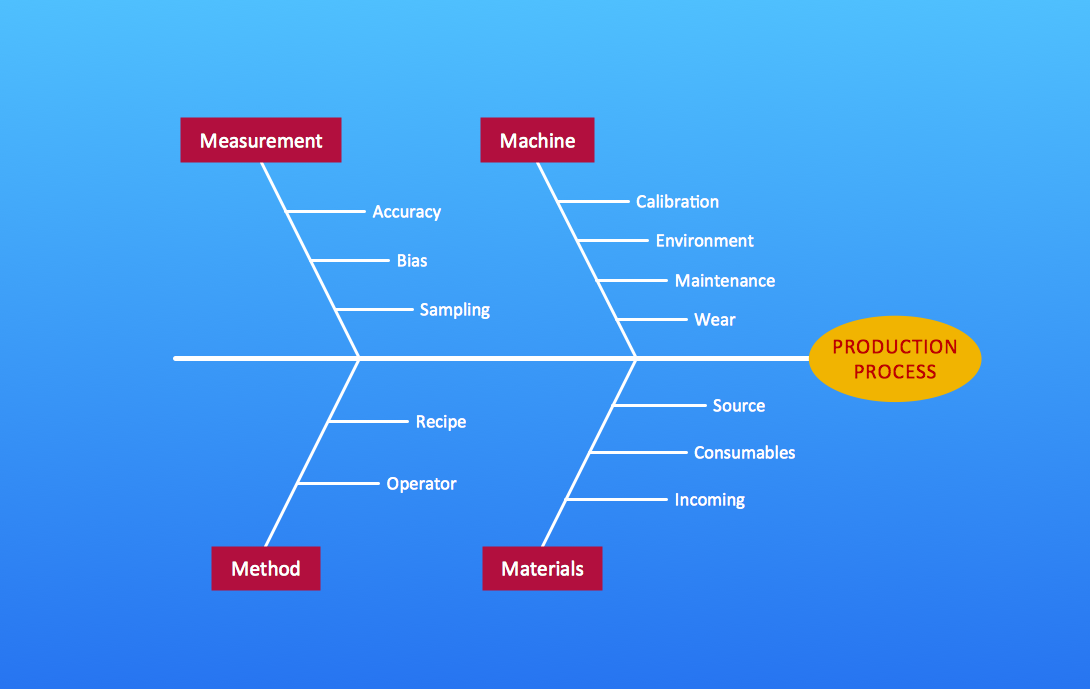
Teams typically label it with the major contributing factors, such as people, equipment, materials, environment, and methods. You construct it by drawing a horizontal line with the problem or effect written at the end, and then drawing lines coming off of the central line to represent the different categories of causes. Teams typically use a fishbone diagram to identify all of the possible causes of a specific problem or effect. Organizations across a variety of industries, including manufacturing, healthcare, and service use the fishbone diagram to identify and analyze the factors that contribute to a particular problem or issue. It is named after Japanese quality control expert Kaoru Ishikawa, who developed the concept in the 1960s. Some purists may scoff at this approach, but I think it makes sense.A fishbone diagram, also known as an Ishikawa diagram or cause and effect diagram, is a tool used to identify the root causes of a problem. Some mind mapping programs may also be suitable for creating a left-facing “input tree,” which functions similar to a fishbone diagram, except that it uses the mind mapping method of connecting topics, as explained in this post on the MindGenius blog.
Fishbone diagram problem solving software#
While you can easily produce a fishbone diagram by hand on paper or a whiteboard, there are also a number of software programs you can employ to create them: Which software programs can you use to create Fishbone diagrams? This may include interviewing people close to the problem, investigating related reports, surveying employees and other activities designed to help you understand as much as possible about the true nature of the root causes of the problem you face. Focus on the most likely causes of the problem, and then investigate them further. The result will be a multi-level, hierarchical diagram like the on pictured above.ĥ. Continue drilling down with successive “Whys” until you can no longer do so. For each cause you’ve added to your fishbone diagram, ask “Why does this happen?” and record any sub-causes on shorter lines that branch off of the appropriate main category. Causes may appear within multiple categories, if it makes sense to do so.Ĥ. Brainstorm specific causes within each category, and add them as sub-branches to the appropriate category. You may also develop your own first-level criteria.ģ. Any one of these groups can form the main “bones” of your fishbone diagrams. Other possible category groupings may include the McKinsey 7S framework (Strategy, Structure, Systems, Shared values, Skills, Style and Staff), the 7 P’s of marketing (Product, Place, Price, Promotion, People, Process and Physical Evidence) and the 5W & H approach to problem definition (Who, What, When, Where, Why and How). Environment: What are the conditions in which the process operates, such as location, temperature and workplace culture?.Measurement: What data does the process generate that will help us to evaluate its quality?.Materials: What raw materials or parts are used to produce the final product?.Machines: What tools or equipment are used to accomplish the job or complete the process?.Methods: How is the process performed? What are the specific requirements for doing it, such as policies and procedures?.The American Society for Quality (ASQ) recommends that you focus on these types of causes:- People: Anyone involved in the process Add the main categories of potential causes as lines at 45-degree angles above and below the problem line – like the bones of a fish that are joined to the backbone.

This is the “backbone” of the fish’s skeleton.Ģ. Then draw a horizontal line with an arrow pointing to the left. Place it within a box on the right side of your diagram. Agree on a brief statement of the problem. In other words, they may end up solving the wrong problem!Ĭreating a fishbone diagram is easy, and doesn’t require any specialized knowledge:ġ. Fishbone diagrams have another important benefit: Without such a visual analysis, a team may waste time brainstorming solutions to what they assume is the problem, when in fact it may only be a symptom. By dissecting the problem and recording its possible causes in writing, this process can often illuminate potential solutions. The fishbone diagram is especially useful during the problem definition segment of brainstorming sessions, where it helps individuals and teams to deconstruct problems and challenges. It’s often used to identify and fix the sources of defects or inefficiencies in a process or product – but it can also be used to help you and your team solve many types of business challenges.

Fishbone diagrams, also known as cause and effect or Ishikawa diagrams, are useful for determining the root cause of a problem or challenge.Ĭommon uses of this type of diagram are for product development and quality improvement.


 0 kommentar(er)
0 kommentar(er)
